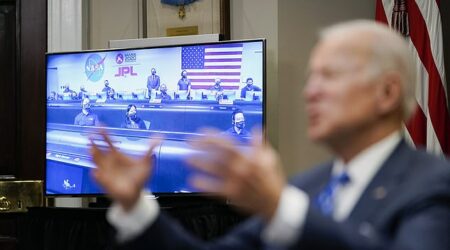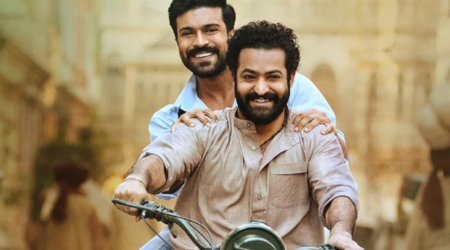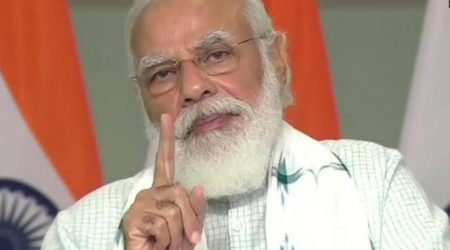By Swati Ramanathan and Ramesh Ramanathan
India’s political body has lost its balance. The middle has been overcome by vitriolic opponents. Debate is being replaced by narrative.
The blame lies with two groups: Loyalists of the Narendra Modi government, but, equally, the growing club of the anti-Modi liberal clergy. Message has become secondary to messenger: “Which side are you on?” is the only prism that matters.
We are on neither side. We speak from that shrinking sliver of the middle ground, neither Modi-bhakts nor Modi-haters. There are reforms and initiatives of the Modi government that we agree with, but also actions that we disagree with. But the corrosive discourse we are seeing now is dangerous. Serious debates are getting trivialised into a Modi litmus test.
Take the recently-released Freedom House report on Democracy for 2021. There are 25 questions spanning two categories: Political rights and civil liberties. This year, India’s score slipped to 67, from 75 in 2020, moving it from “free” to “partly free”. India’s big drop was in civil liberties, to 33 from 40 last year. But here’s the rub — the same Freedom House report gives Hong Kong a higher score (37) than India. It’s ludicrous for even the most trenchant critic of the Modi regime to agree with these assessments. Yet, no one on the liberal side flagged these contradictions, possibly because it’s inconvenient and doesn’t suit their narrative. But those representing the ruling regime are also to blame — for rolling out the anti-national trope or suggesting that we ought to create our own democracy index.
As a result, that space in the middle, for a reasoned debate, shrank once again.
This scorched earth approach may be acceptable to these warring factions, because they are fighting a bigger battle over legitimacy. Modi’s critics claim that democracy is endangered in India. As evidence, they point to the attempts by the Modi regime to bully/undermine/co-opt various institutions and voices — the media, courts, business community, opinion-shapers. Has the government attempted to overreach? Only a rabid Modi-bhakt would disagree.
But the right measure is not what was attempted. Which regime wouldn’t want a friendly media? When is it that those in power haven’t attempted to muzzle or nudge other arms of accountability? Fortunately, the messy plumbing of the State not only leaks like a sieve but is often too dysfunctional to be effective. The right measure is, therefore, not the attempt itself, but whether it succeeded. In a vibrant democracy, failed attempts result in public backlash, thereby strengthening the voices of the Opposition.
Take the Disha Ravi case. Did the government attempt to overreach? Yes, and it was Exhibit A for ineptness. But what was the response? Fiery opposition and public opprobrium ending with a harsh put-down by the courts.
The liberals proclaimed yet another example of the Modi government muzzling free speech to pronounce a further erosion of democratic values in India. Viewed through a different prism, however, one could reach a different conclusion — that there are enough voices of opposition, and importantly, agile alliances, to thwart any attempt to silence critics. And, therefore, that democracy is alive and kicking in India.
Take another example — the farm law debates. We see coalitions and cleavages, symbolism and squeeze-where-it-hurts tactics on display from both sides. And there are upcoming state elections to politically test the competing messages. What more can one ask for? Whichever way the farm law debate settles, it should surely be considered a resounding win for Indian democracy.
This battle for legitimacy is being fuelled by a dual monopoly in the intellectual-political landscape. The liberals claim, with merit, that the Modi-led BJP is acquiring hegemonic control over India’s electoral democracy. But liberals ignore that they hold similar hegemonic sway over the global narrative. Modi’s electoral hegemony is public. The liberal hegemony is invisible. In this asymmetric intellectual war, the liberals have a well-established, influential global network spanning academia, think-tanks, media and opinion-makers that gets instantly activated. The conservative right has nothing close to this. As to the BJP’s efforts to construct its own ecosystem, it’s debatable how long this will take to bear fruit, if at all.
Confronted by the BJP’s electoral hegemony, the liberals seem to have shifted the goalposts — to measure democracy beyond electoral processes. While such an approach is intellectually valid, the timing of this shift is questionable, coinciding with the BJP’s 2019 election victory — the democracy-between-elections theme was barely mentioned earlier.
Also, they are on a slippery slope to question the value of elections, since India’s voters, more than any liberal network, have been the real sentinels of our democracy. After all, it was the electorate which ensured that India walked back from the brink of the Emergency in 1977. Or, more recently, when it displayed remarkable political sophistication in Delhi’s state elections of 2020, bringing back AAP with a 67-seat majority after giving all Parliament seats to BJP.
India faces complex challenges on a variety of fronts. Each of these needs equally complex solutions that can only emerge from substantive, nuanced debates. These exchanges can be intense, even bare-knuckled, pitting one set of ideas against another. But this can only happen when India has a large and vibrant political middle.
Swati Ramanathan and Ramesh Ramanathan are co-founders of Jana Group. The op ed appeared first in Hindustan Times.










